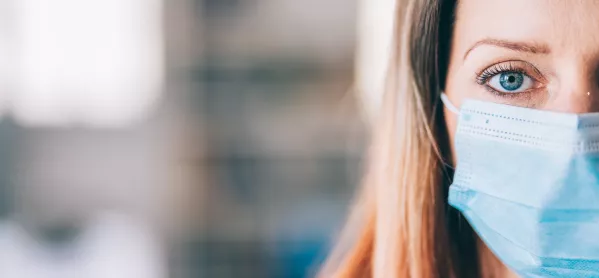Attendance data ‘masks’ Delta Covid rise, heads warn

“Huge differences” in levels of school attendance across the country are “masked” in today’s government figures, say headteachers
The weekly attendance figures, published today, show a slight decrease in the number of primary pupils off school for Covid-related reasons, while the number of teachers and leaders off school due to Covid has risen slightly.
But the NAHT school leaders’ union reports “a big increase in outbreaks” of the new Delta variant in some places, including at one school that has seen more positive Covid cases in the past 10 days than in the whole pandemic.
Exclusive: Teachers ‘thrown under the bus’ with Covid face masks rule
Top scientist: ‘It’s dangerous not to wear masks now’
Covid and schools: 76 per cent of teachers think they should get vaccine priority
The Department for Education figures published today show that, in primary schools, Covid-related absence was 1.1 per cent on 10 June, down from 1.6 per cent on 27 May.
And 0.9 per cent of teachers and school leaders in state-funded schools were absent due to Covid reasons on 10 June, up from 0.7 per cent on 27 May.
For secondaries, the DfE says Covid-related absence (adjusted to exclude Year 11-13 pupils) was 1.4 per cent on 10 June - down from 2 per cent on 27 May (which included all pupils in Years 11-13).
Covid: The impact of the Delta variant in schools
However, NAHT general secretary Paul Whiteman said: “We know from our members that the national attendance figures mask huge regional differences due to the prevalence of the Delta variant in some areas.
“We are hearing that there has been a big increase in outbreaks in some places. One school told us that, ‘We have seen more positive Covid cases in our school and its wider community in the last 10 days than we have seen in the previous 440 days of the pandemic.’”
The headteacher in question, NAHT executive member and Cheshire primary head Simon Kidwell, set out his concerns in a tweet, which dozens of people responded to, including teachers and school leaders saying they had sent bubbles home.
We have seen more positive covid cases in our school, and it’s wider community, in the last 10 days than we have seen in the previous 440 days of the pandemic. @jandiamond76 @MikeAmesburyMP @mjb302 @BBCElaine @BeckyJohnsonSky @RogerJ_01 @NAHTnews @RaeSnape @smithsmm @weezegee pic.twitter.com/gt5cFQomJE
- Simon Kidwell (@simonkidwell) June 13, 2021
Mr Whiteman added: “Given the current situation, the government really had no other option than to keep existing safety measures in place in schools. Relaxing them at this stage would have been reckless, to say the least.
“What the government needs to do now is start talking to schools about September. School leaders are already thinking about plans for the start of the next term.
“While it is obviously difficult to predict precisely how the situation will evolve in the coming months, the government cannot simply assume that things will be ‘back to normal’. Schools need to know what possible scenarios to plan for, and they need to know well before the summer break so that they can put the necessary arrangements in place.
“Silence from the government will only lead to further disruption to the quality and continuity of young people’s education.”
A government spokesperson said: “Schools across the country continue to have robust protective measures in place, including regular weekly testing to break chains of transmission and keeping pupils in smaller group bubbles.
“We are also taking additional measures in areas where there is a high prevalence of the Delta variant, including increasing the availability of testing for staff, pupils and families and working with directors of public health to reduce local transmission.”
You need a Tes subscription to read this article
Subscribe now to read this article and get other subscriber-only content:
- Unlimited access to all Tes magazine content
- Exclusive subscriber-only stories
- Award-winning email newsletters
Already a subscriber? Log in
You need a subscription to read this article
Subscribe now to read this article and get other subscriber-only content, including:
- Unlimited access to all Tes magazine content
- Exclusive subscriber-only stories
- Award-winning email newsletters
topics in this article



